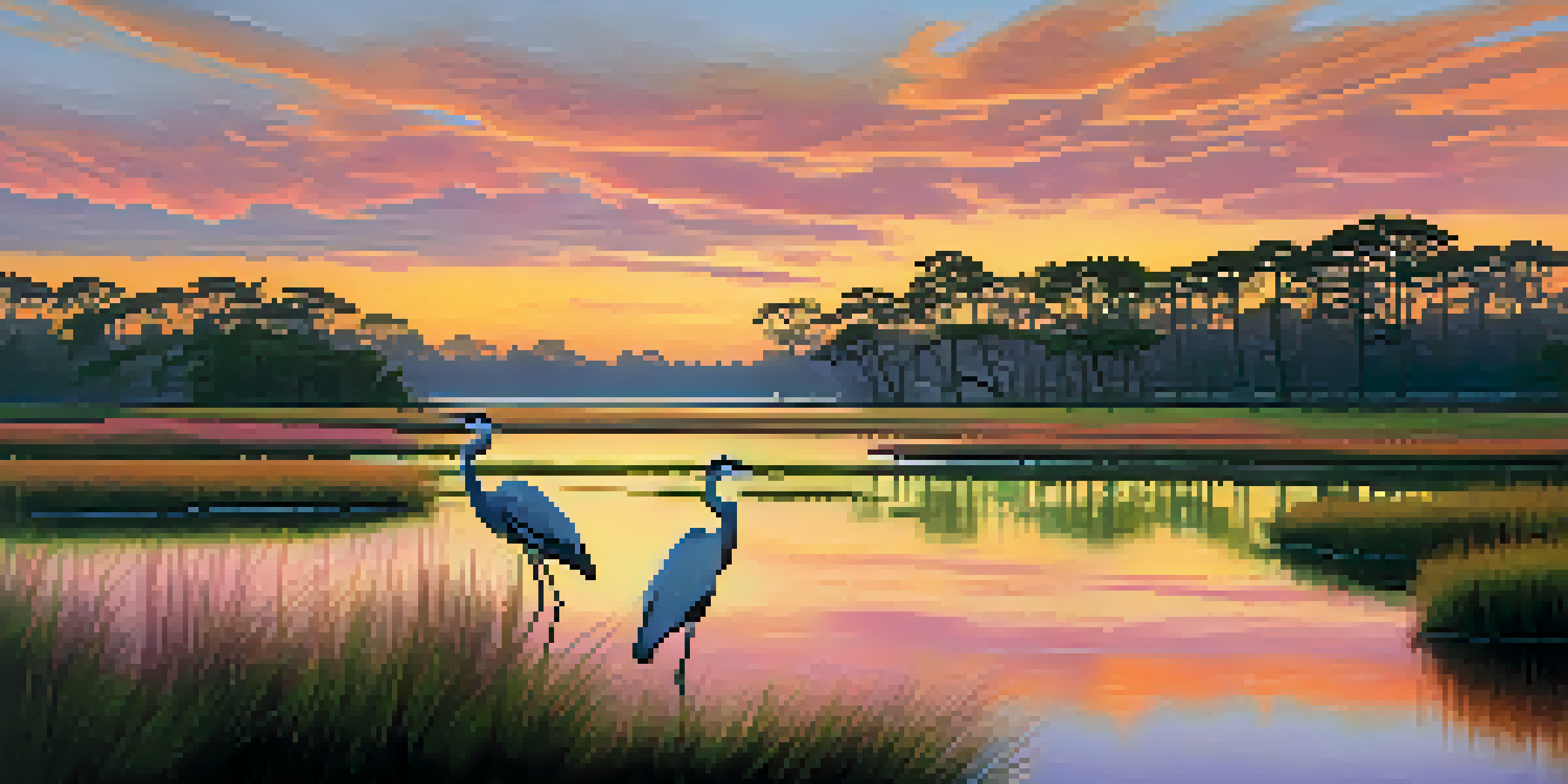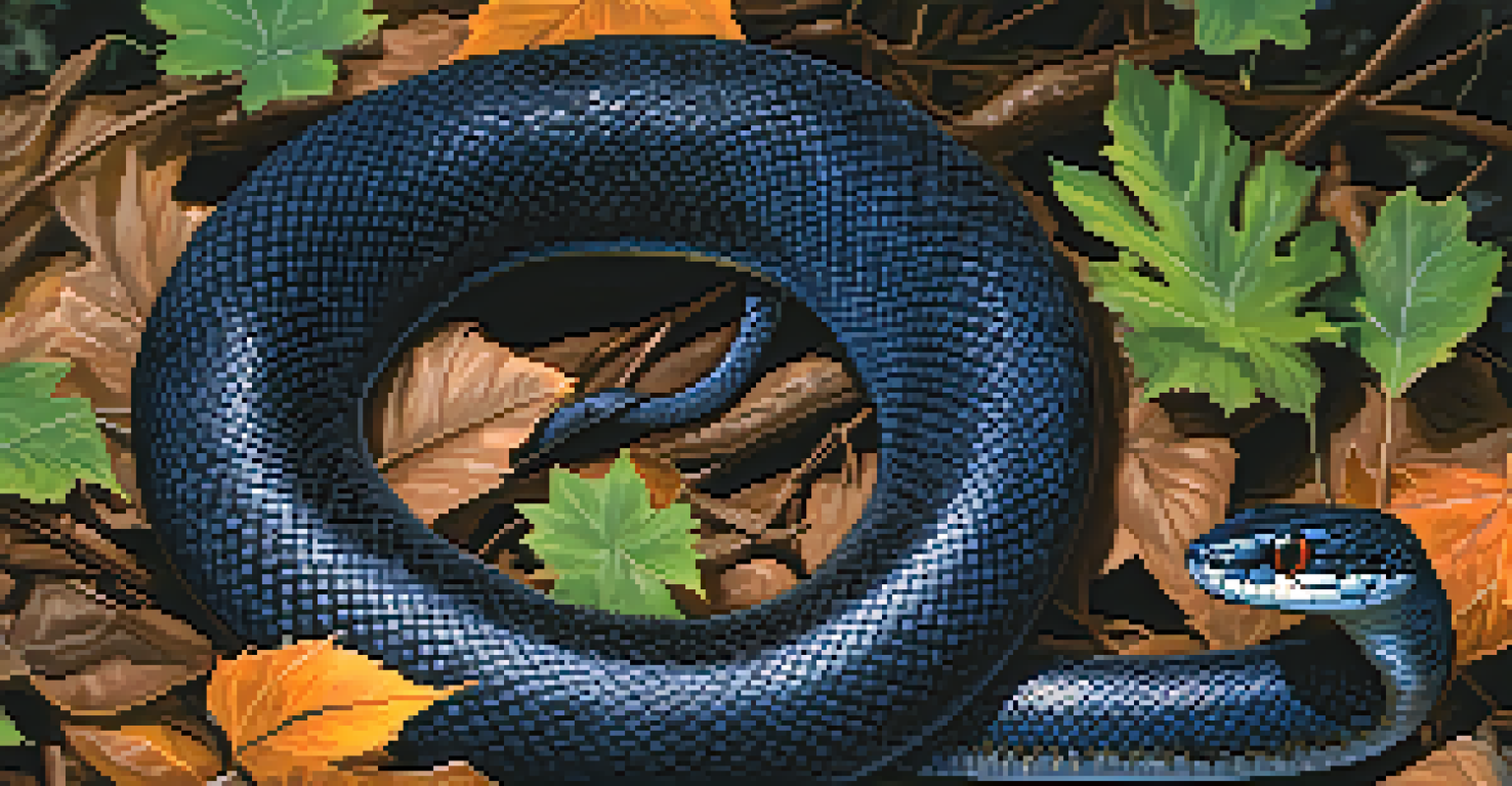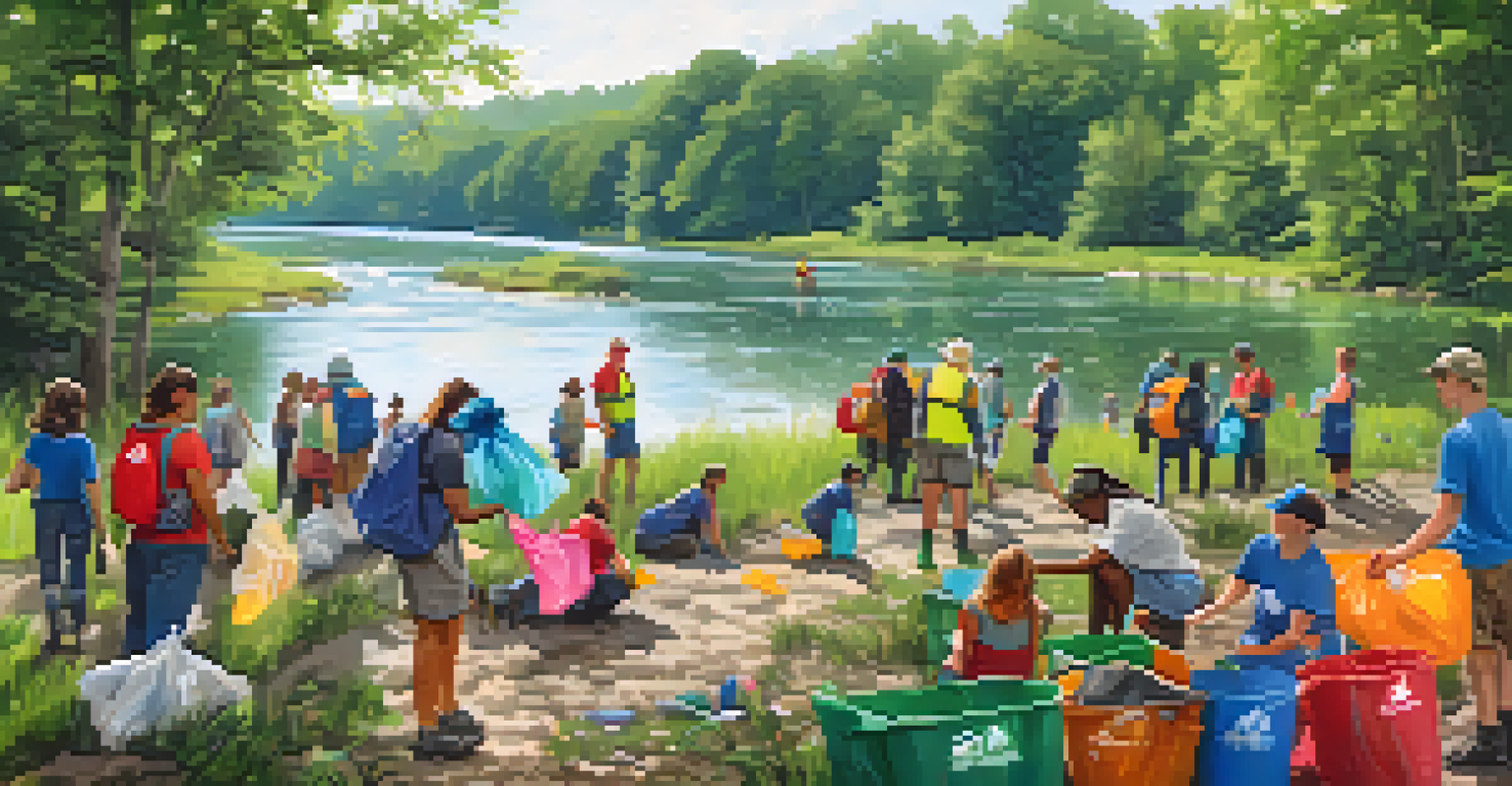Exploring Georgia's Wildlife Conservation Efforts and Strategies

Understanding Wildlife Conservation in Georgia
Wildlife conservation in Georgia is a vital commitment to preserving the state's rich biodiversity. The state is home to various ecosystems, ranging from coastal marshes to mountainous regions, each hosting unique species. Conservation efforts aim to protect these habitats and the animals that rely on them, ensuring a balanced ecosystem for future generations.
The clearest way into the Universe is through a forest wilderness.
The significance of conservation goes beyond just protecting animals; it also involves preserving the natural beauty and resources that Georgia offers. By maintaining healthy wildlife populations, we can enjoy activities like hiking, bird watching, and fishing, which are essential parts of Georgia's culture. Furthermore, healthy ecosystems are crucial for maintaining clean air and water, which benefits everyone.
Efforts in wildlife conservation are a collaborative endeavor, involving government agencies, non-profits, and local communities. This teamwork helps create comprehensive strategies that address the unique challenges faced by wildlife in Georgia, allowing for more effective and sustainable outcomes.
Key Wildlife Species Under Conservation Focus
Georgia's wildlife conservation efforts prioritize several key species that are either endangered or threatened. For instance, the Eastern Indigo Snake, a non-venomous species, has seen its numbers dwindle due to habitat loss and road mortality. Conservation programs aimed at protecting these snakes focus on habitat restoration and public education to reduce road-related fatalities.

Another vital species is the Georgia Darter, a small fish found in the state's rivers and streams. With habitat degradation and water pollution threatening its survival, targeted conservation strategies have been implemented to improve water quality and restore natural habitats. These efforts not only benefit the Georgia Darter but also enhance the overall health of aquatic ecosystems.
Biodiversity Conservation Importance
Wildlife conservation in Georgia is crucial for preserving diverse ecosystems and maintaining natural beauty for cultural activities.
Moreover, the Bald Eagle, a symbol of strength and resilience, has made a remarkable recovery thanks to concerted conservation efforts. With the help of habitat protection and monitoring initiatives, Georgia's Bald Eagle population has rebounded significantly, showcasing the positive impact of dedicated wildlife conservation strategies.
The Role of Education in Wildlife Conservation
Education plays a crucial role in wildlife conservation by raising awareness about the importance of protecting natural habitats and species. Schools and organizations across Georgia are implementing programs that teach students about local wildlife and conservation efforts, fostering a sense of responsibility toward nature. These educational initiatives can inspire future generations to engage in conservation activities and advocacy.
In every walk with nature, one receives far more than he seeks.
Community involvement is another essential aspect of conservation education. Workshops, volunteer opportunities, and guided nature walks encourage locals to participate in hands-on conservation efforts. By actively engaging with their environment, community members not only learn about wildlife but also develop a deeper appreciation for Georgia's natural resources.
Moreover, the use of social media and online platforms has expanded the reach of conservation education. Organizations can share success stories and conservation tips with a broader audience, sparking interest and encouraging individuals to take action in their own communities. This digital approach effectively connects people to the wildlife around them and emphasizes the importance of their role in conservation.
Innovative Conservation Strategies and Technologies
Georgia is at the forefront of adopting innovative strategies and technologies in its wildlife conservation efforts. One such method is the use of wildlife tracking devices, which help researchers monitor animal movements and behaviors in real-time. This data is invaluable for understanding species habits and making informed decisions about habitat protection.
Another exciting advancement is the use of drones in conservation efforts. Drones can cover vast areas of land quickly, allowing conservationists to survey habitats and track wildlife populations with ease. This technology not only saves time but also minimizes human disturbance to sensitive areas, enabling more accurate data collection.
Community Engagement in Conservation
Community involvement is essential for successful conservation efforts, fostering a sense of ownership and pride in local natural resources.
Furthermore, habitat restoration projects utilize advanced techniques such as controlled burns and reforestation to rejuvenate ecosystems. By carefully managing land and reintroducing native species, these strategies enhance biodiversity and create healthier habitats for all wildlife. The integration of technology in conservation practices marks a significant step toward more effective wildlife management.
Community Involvement in Conservation Initiatives
Community involvement is a cornerstone of successful wildlife conservation in Georgia. Local residents are encouraged to participate in conservation initiatives, such as clean-up events, habitat restoration projects, and wildlife monitoring programs. This hands-on involvement helps instill a sense of ownership and pride in the community's natural resources.
Moreover, partnerships between conservation organizations and local businesses can amplify the impact of these initiatives. For example, eco-tourism ventures often collaborate with conservation groups, offering tours that educate visitors while generating funds for wildlife preservation. This symbiotic relationship benefits both wildlife and the local economy.
Additionally, community awareness campaigns play an essential role in fostering a conservation-minded culture. By sharing stories of local wildlife and the challenges they face, these campaigns inspire individuals to take action and support conservation efforts. When communities come together, they can create a powerful force for positive change in wildlife preservation.
Government Policies Supporting Wildlife Conservation
Government policies play a vital role in shaping wildlife conservation efforts in Georgia. Regulations that protect endangered species and their habitats help ensure that these vulnerable populations have a fighting chance for survival. By creating and enforcing laws that limit habitat destruction and pollution, the government can help mitigate some of the threats facing wildlife.
Additionally, funding for conservation programs often comes from government initiatives. Grants and financial support from state and federal agencies allow organizations to implement essential projects aimed at protecting wildlife and restoring habitats. This financial backing is crucial for sustaining long-term conservation strategies.
Challenges and Future Opportunities
Georgia's wildlife conservation faces challenges from climate change and urbanization, but these also create opportunities for innovation and collaboration.
Moreover, collaborative efforts between government agencies and non-profit organizations can lead to more comprehensive conservation plans. By pooling resources and expertise, these partnerships create stronger frameworks for protecting Georgia's wildlife, ensuring that efforts are effective and far-reaching.
Future Challenges and Opportunities in Conservation
As Georgia's wildlife conservation efforts continue to evolve, several challenges remain on the horizon. Climate change poses a significant threat to habitats and species, potentially altering ecosystems in unpredictable ways. Conservationists must stay vigilant and adaptable, developing strategies to mitigate the impacts of climate change on wildlife populations.
Another challenge is the ongoing urbanization and development in Georgia. As cities expand, natural habitats are often lost, leading to increased pressure on wildlife. Balancing growth and conservation will require innovative solutions, such as creating wildlife corridors that allow animals to safely navigate urban landscapes.

However, these challenges also present opportunities for innovation and collaboration. By embracing new technologies and fostering partnerships between various stakeholders, Georgia can continue to make strides in wildlife conservation. With a collective commitment to protecting the state's biodiversity, the future of Georgia's wildlife can be bright.